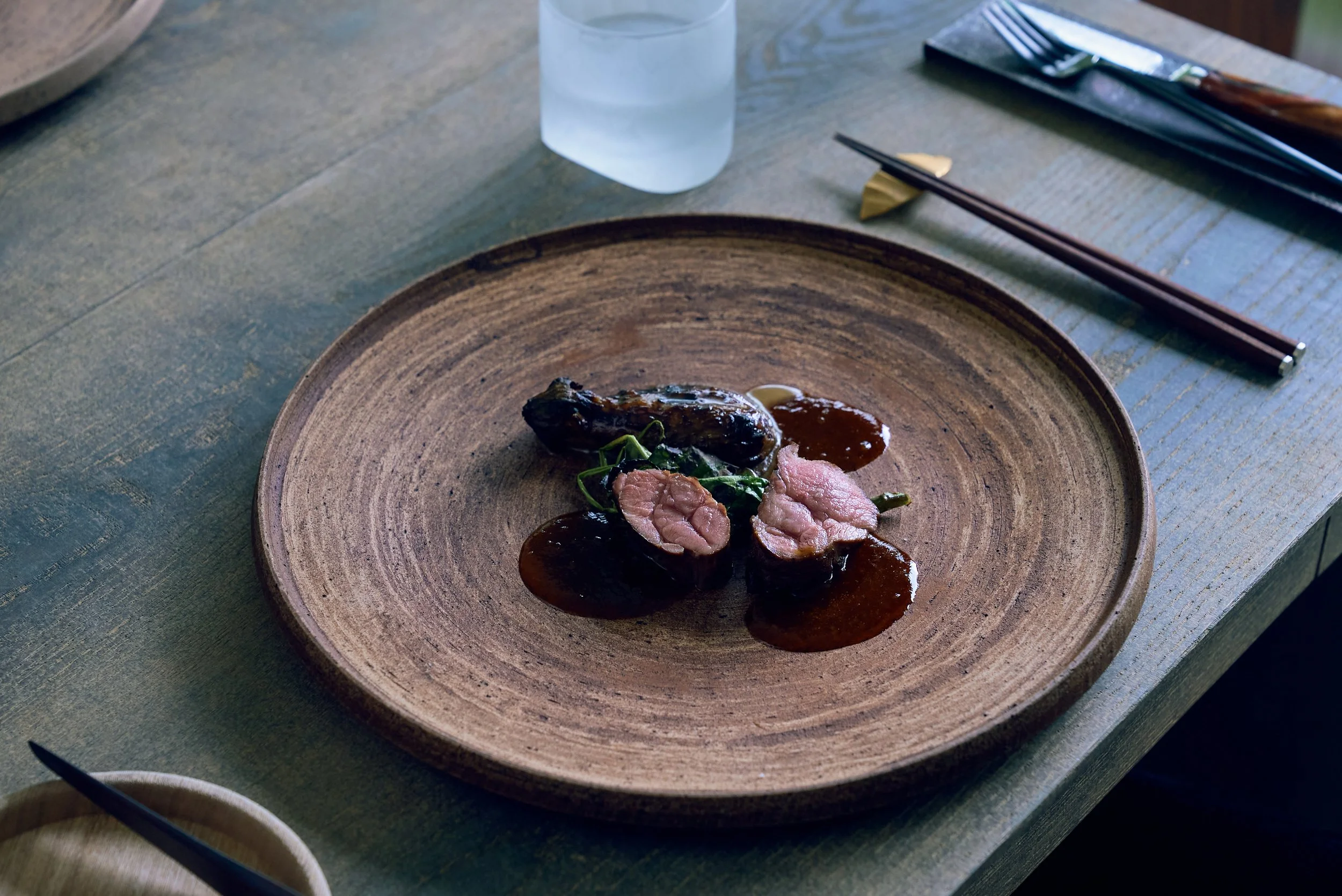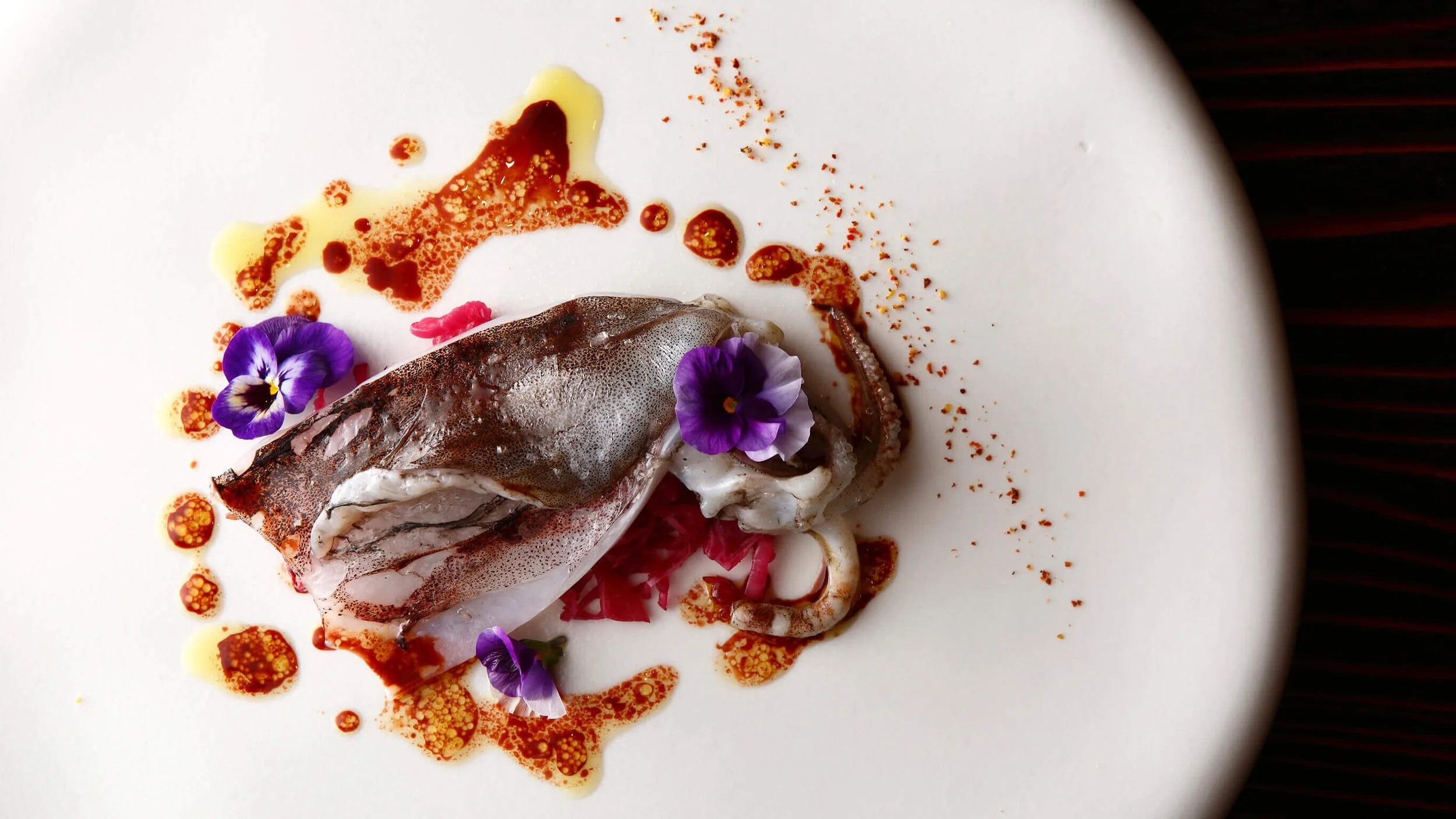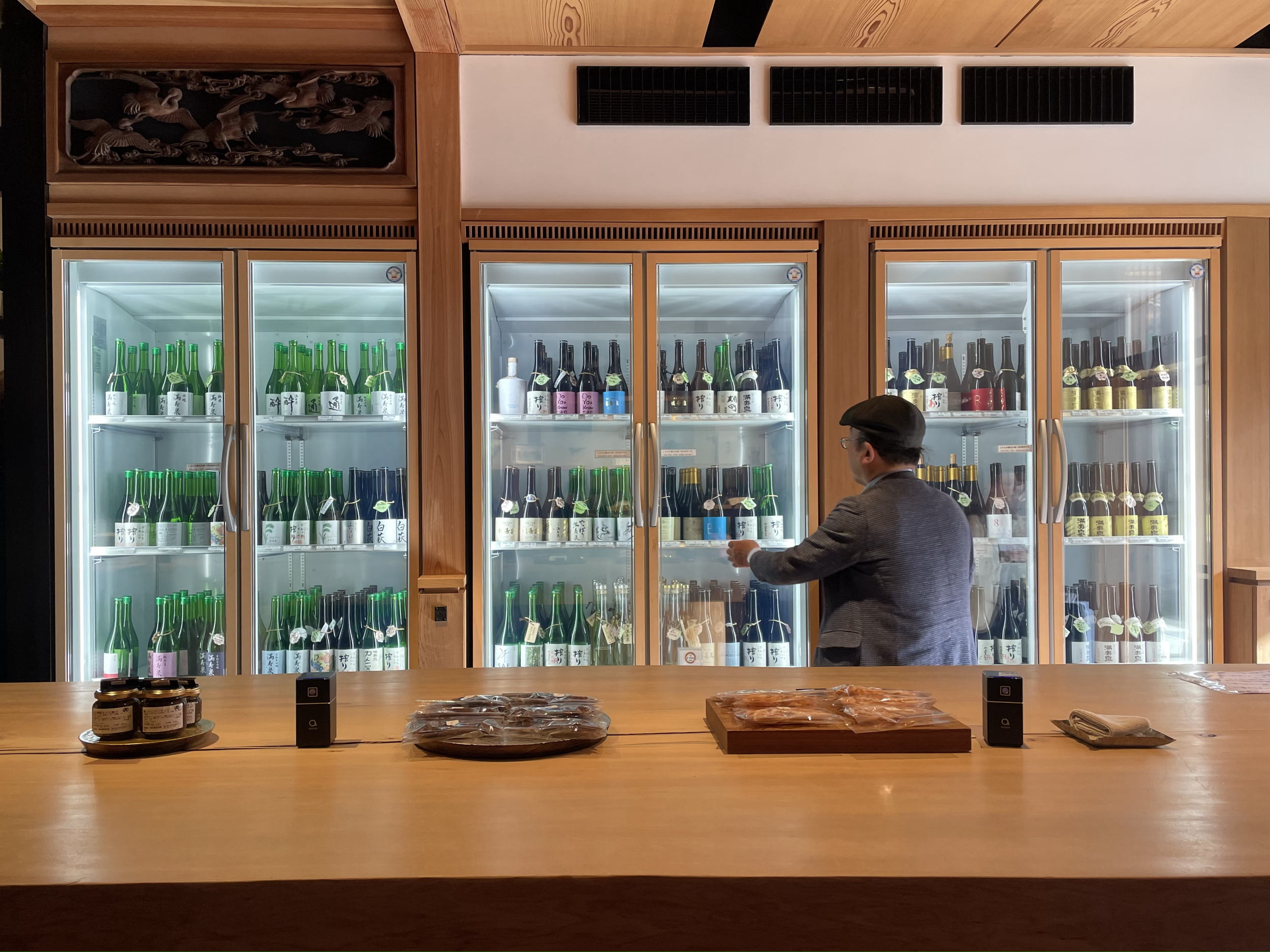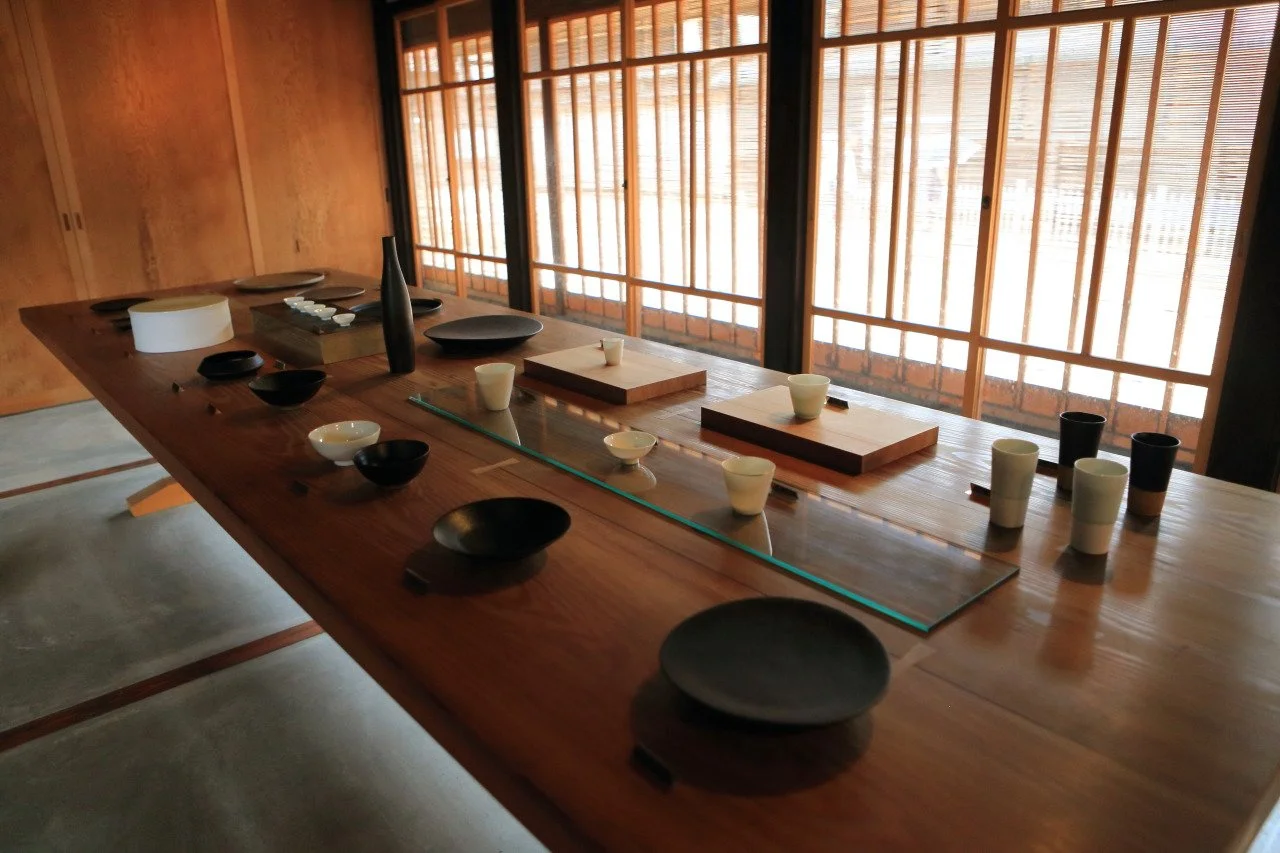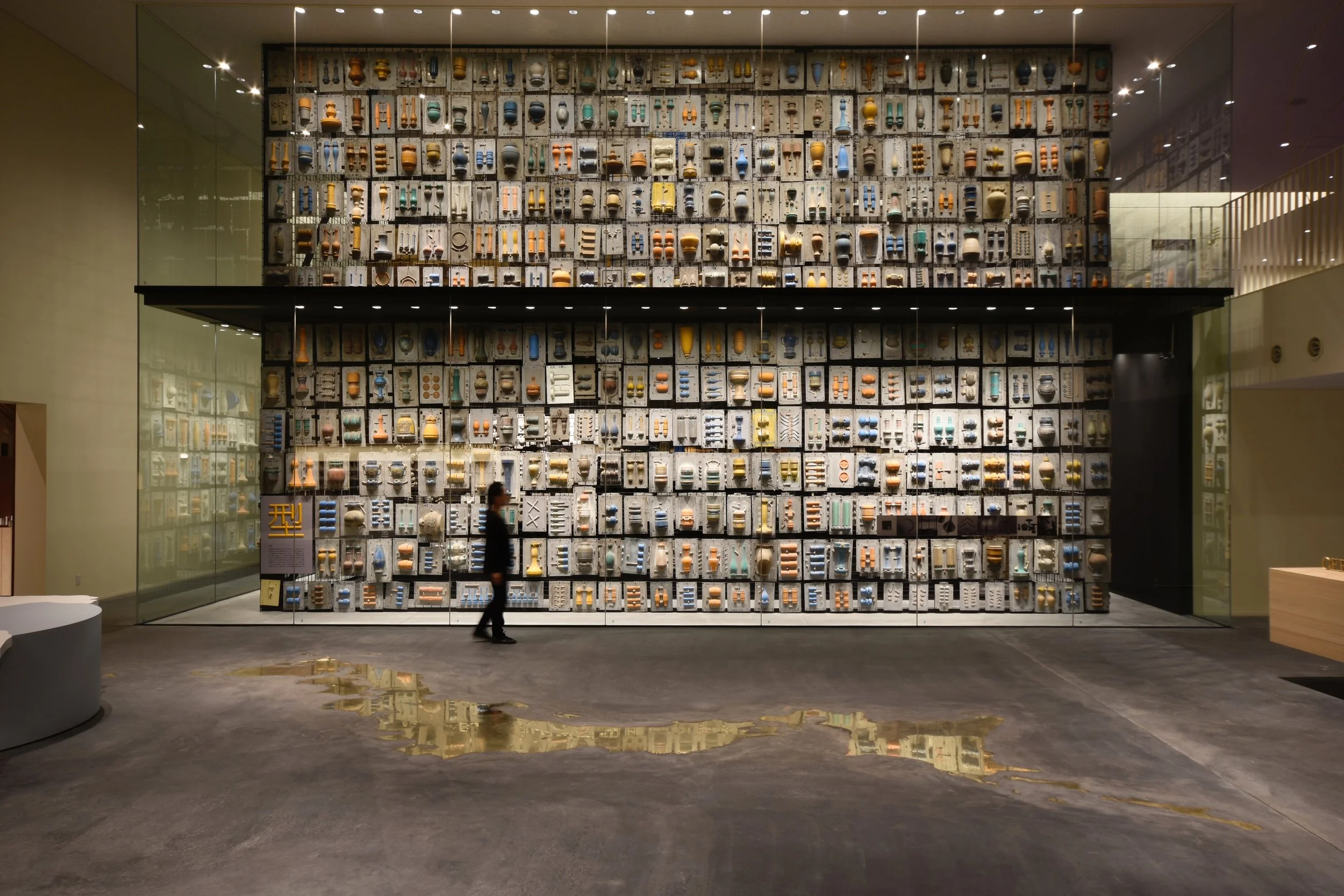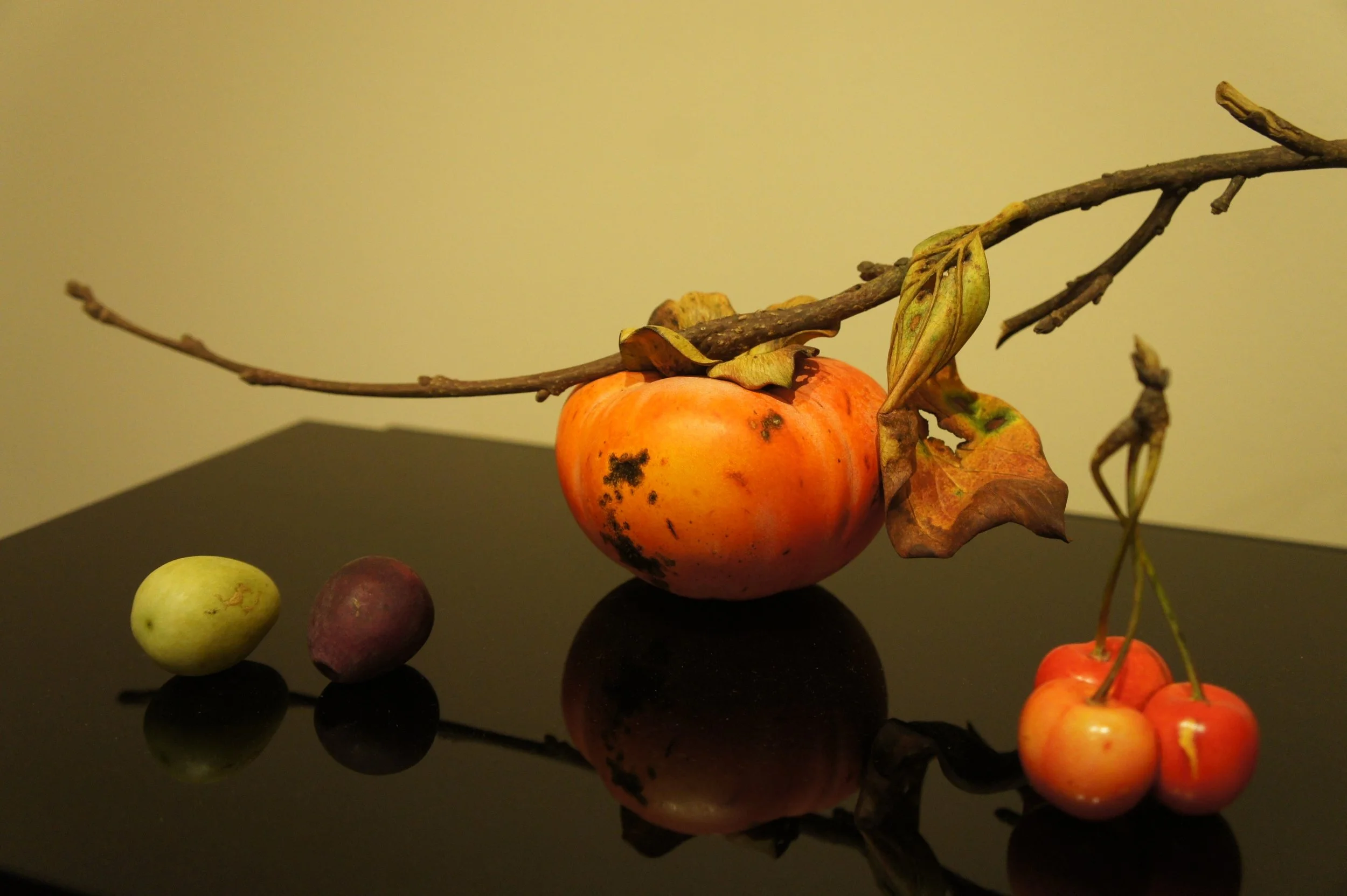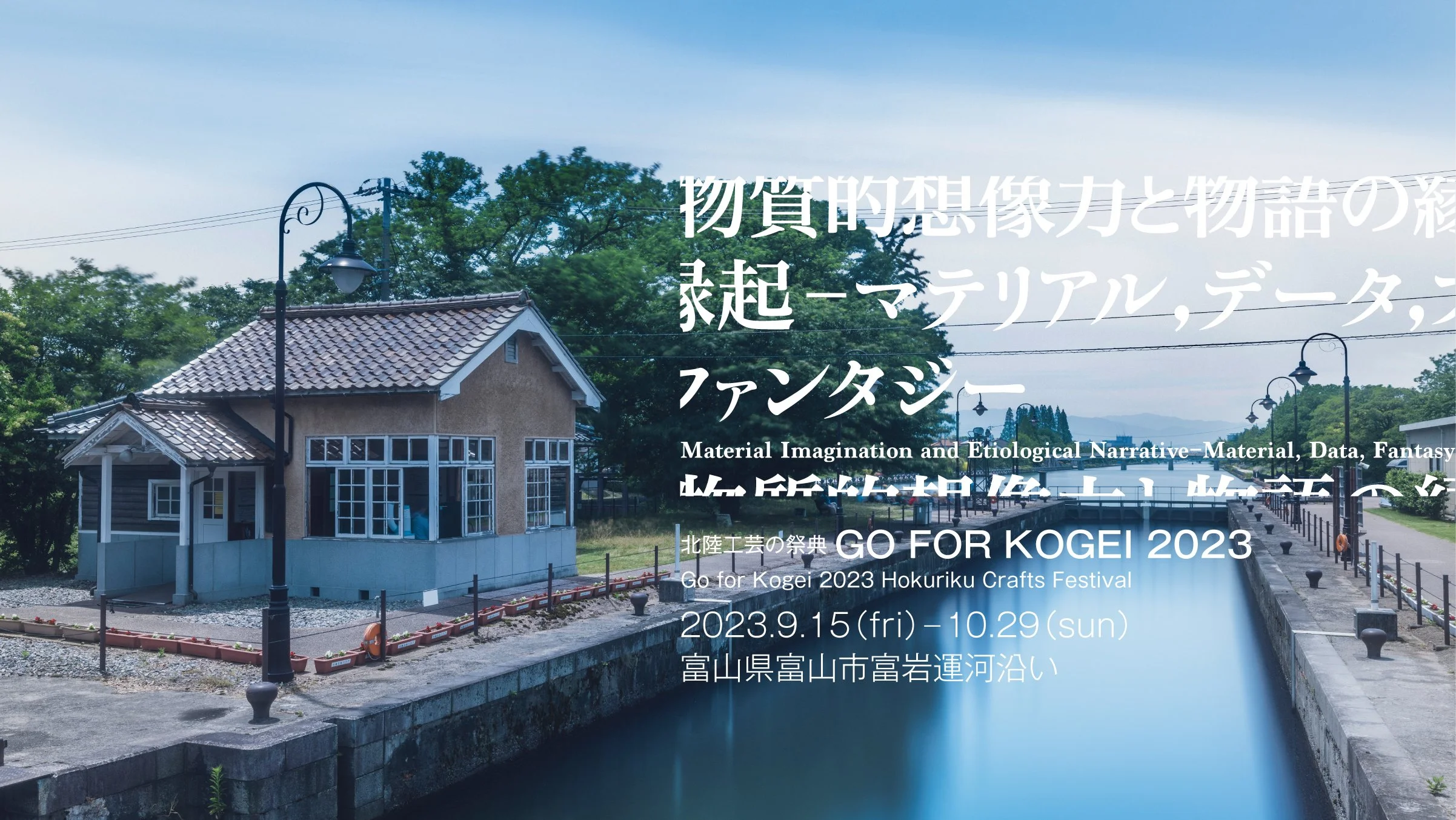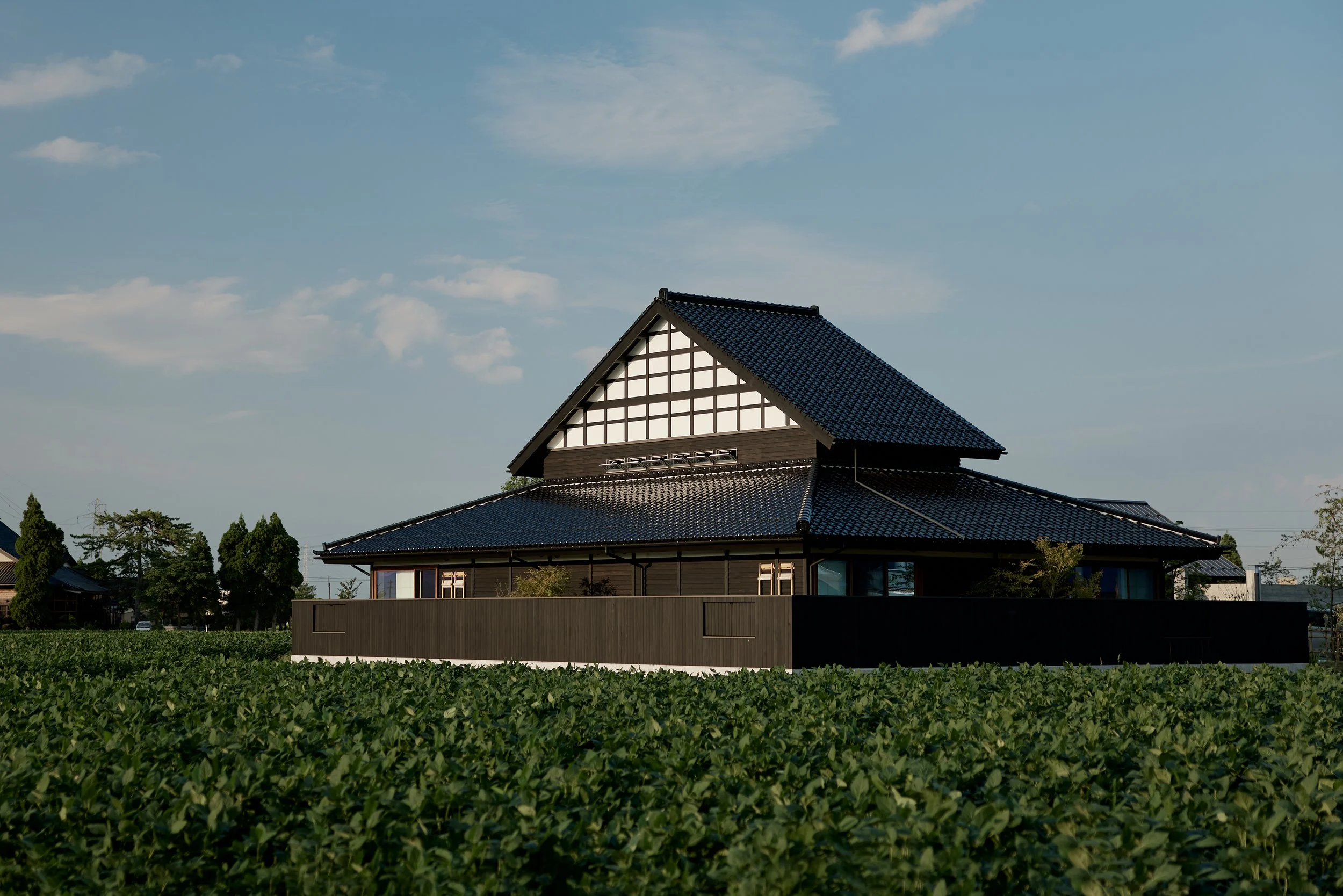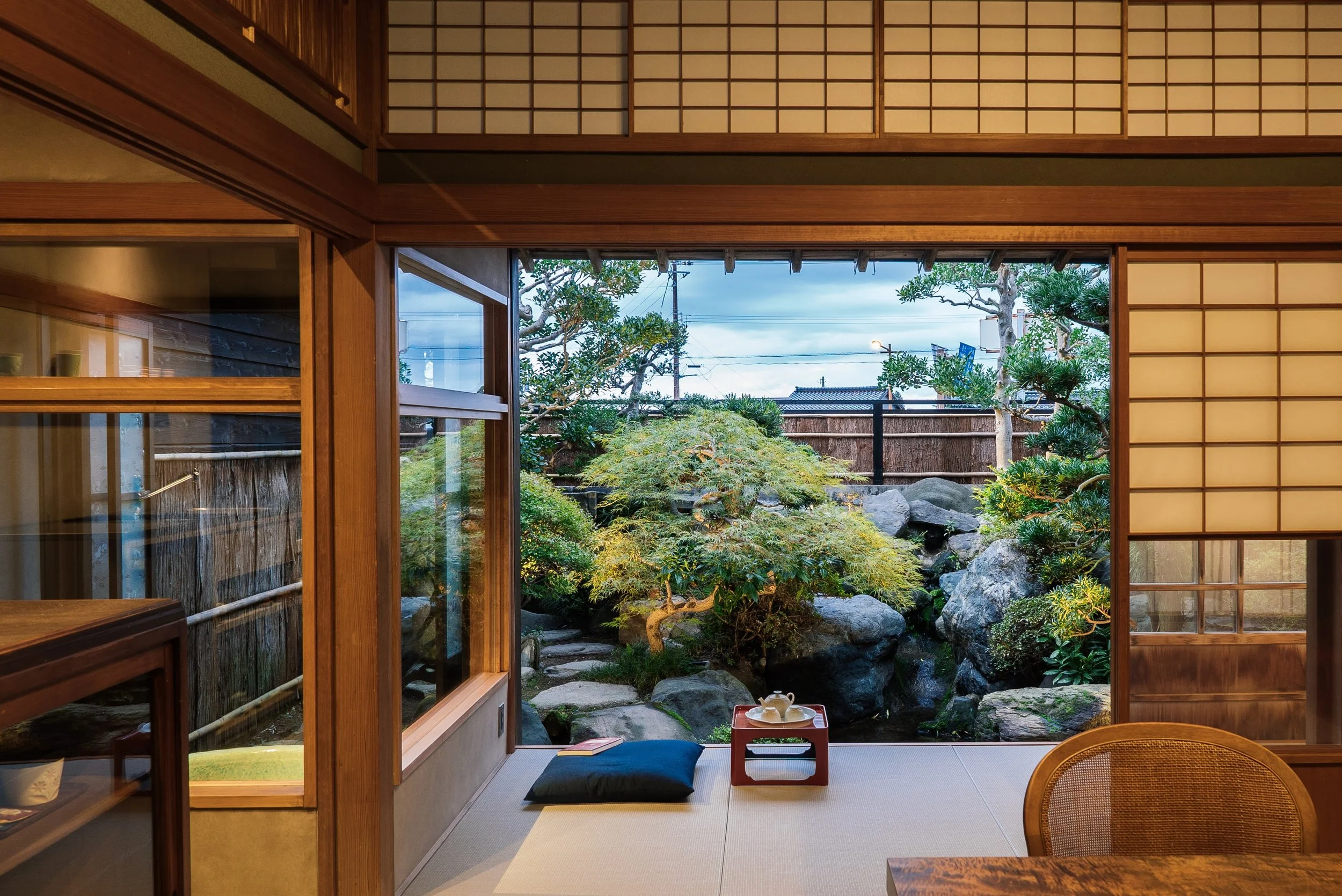Gastronomy and Crafts in Toyama
The Essence of Japanese Well-Being
To travel in Toyama is to move toward peace of mind. You’ll find it in the prefecture’s vast mountain scenery, along its beautiful coast, while savoring the gifts of its farmlands and when handling fine items made by its many artisans. Toyama is a place that promotes a deep sense of calm.
Toyama invites you to immerse all the senses in these blessings. And the immersion may be literal—the pure snowmelt and spring water filling your bath, the local foods and drinks that nourish your body and soul.
We all need a place to slow down in today's fast-paced world. To breathe in fresh air. To rest in the moment as we encounter some time-honored art or craft tradition. Visiting Toyama is an opportunity to rekindle such connections to the source of our well-being.
L’évo
This Michelin-starred auberge stands in the tiny hamlet of Togamura, nestled deep in the mountains of southwestern Toyama Prefecture. In 2021, L’évo was named Destination Restaurant of the Year by The Japan Times. Chef Eiji Taniguchi starts his day tending the kitchen garden he built himself and, depending on the season, foraging in the surrounding hills for the hyper-local ingredients he transforms into avant-garde feasts.
Iwase Port Area
The Iwase area facing Toyama Bay in the northern part of the prefectural capital is another place foodies and history buffs should not miss. No fewer than six Michelin restaurants are found on an atmospheric street lined with beautiful old buildings. The townscape harks back to days centuries ago when ports like this one flourished in the Sea of Japan shipping trade. Also in Iwase is a standing bar where you can sip and savor about 100 kinds of sake by the venerable Masuda Shuzo brewery, including its signature Masuizumi label.
Oryouri Fujii
Among the Michelin-starred restaurants in Iwase is Oryouri Fujii. The refined multicourse kaiseki meals served by chef Hironori Fujii reflect the season not only in the choice of ingredients but also in cooking methods and the artful selection of each serving dish. Dine at the Chef’s Table for views of the classic Japanese garden, a scene that only adds to the sensory delight of a meal infused with the bounty of Toyama’s land and sea.
Cave Yunoki
Another of the Michelin-star choices in Iwase is Cave Yunoki, set in the stylishly refurbished former storehouse of a shipping agent. Here, French-style dishes featuring the seafood, wild game, and produce of Toyama are grilled to perfection by chef Eiju Yunoki over a wood fire. Sit at the counter to watch his culinary theater unfold. The sake selections, the pottery, and serving vessels are made locally in Iwase and other areas of Toyama Prefecture. The chef himself is a native of Toyama.
Saseki
The Masuda Shuzo brewery is synonymous with sake making in Iwase, and its entire collection can be sipped and savored at Saseki, its standing bar. In addition to all the traditional styles of Japan’s national brew, Masuda makes innovative sakes in collaboration with local wineries and makers abroad—imagine the unique flavors of sake have been aged in barrels once used for whisky by Chivas Regal, champagne by Henri Giraud, or chardonnay by Domaine Ramonet. Pull a bottle that appeals to you from the refrigerated shelves and enjoy. Works by Iwase artists adorn the walls in this former building of one of the town’s great shipping houses.
Multiple Centers of Japanese Craftsmanship
Toyama’s legacy of craftsmanship is rooted in the clever ways its people have forged their lives in this mountainous area. Working with the gifts of nature, artisans unite their own creative passions with techniques handed down across generations. Their works shine with an understated beauty that exudes a sense of place right down to the finest detail. In particular, works of glass, pottery, metal, and wood are characteristic of Toyama and are well worth seeking out during your stay.
Toyama’s craftspeople continue to break new ground that drives interest in their art forms at home and abroad. Their masterful skills, carried on and expressed in so many diverse ways, enrich the lives of those who encounter them. To us, Toyama craftsmanship is the epitome of modern luxury.
Glassworks
Toyama has a three-century history as a leading maker of medicines, a regional specialty that enabled glassmaking to flourish back in the day. While many glass studios were lost to the air raids of World War II, and demand for glass vials later gave way to plastics, the local glassmaking tradition was not forgotten. In 1985, a movement to train and support the return of glass artisans began; in 1991, the Toyama Institute of Glass Art was established. In the decades since, hundreds of glass artisans from Japan and abroad have completed its courses, residencies, and visiting scholar programs.
Visitors to the prefecture will encounter original Toyama glassworks at high-end restaurants like L’évo, Oryouri Fujii, and Cave Yunoki. The Toyama Glass Art Museum, gallery exhibitions, and even hands-on workshops taught by artisans themselves await, too.
Featured Artist: Taizo Yasuda, Taizo Glass Gallery
Glass artisan Taizo Yasuda specializes in handblown glass, particularly the multicolored, ornate styles associated with Venetian ware. Bright organic forms by his hand can be found in the vases, tea utensils, tableware, and objects on offer at the Taizo Glass Gallery in the Iwase district and are featured at L’évo and Oryouri Fujii, too.
Ceramicware
The pottery tradition known as Etchu Seto is based in the highland town of Tateyama, where kilns have been firing wares made of local clay for more than four centuries. A high-quality clay especially suited to pottery-making can be found in the mountains here, and some potters continue to dig it themselves. In addition to modern electric and gas-fueled kilns, wood-fired ones are used as well, just as in the days of old. Tateyama potters’ strong connection to the earth is also expressed in their use of glazes derived from natural materials.
Etchu Seto pottery became known worldwide thanks to a connection with Steve Jobs, who discovered the work of one of its artists while vacationing in Japan and became an avid collector of his pots for many years.
Featured Artist: Gaku Shakunaga, Gaku Ceramics
Ceramic artist Gaku Shakunaga was born and raised in a pottery-making family. (His father, Yukio, made the works that famously caught Steve Jobs’s eye.) After studying sculpture and 3D design in college and working as an apprentice to his father, he is now based in Iwase. His works take inspiration from earth and soil and the legacy of his ancestors but are of a style that’s altogether fresh and new. Passionate about pairing dishes and vessels with food and drink, Shakunaga has commissions to provide handcrafted tableware for more than 30 restaurants in Toyama Prefecture and more than 100 across Japan and abroad.
Photography by LADE 根建 孝弘
Metalworks
Metalsmiths in the city of Takaoka in northwestern Toyama Prefecture make more than 90 percent of the bronze and copper works produced in Japan. Indeed, for more than 400 years the city has been a key center for all manner of metal production. The two massive black lanterns that hang in the main gate of Sensoji Temple in Tokyo’s Asakusa district—perhaps one of the most photographed scenes in Japan’s capital—are cast of bronze, the work of Takaoka metalsmiths. Whereas temple bells, Buddhist ceremonial implements, and agricultural tools were central to Takaoka’s industry centuries ago, now its metalsmiths create beautiful works for use in the home, including light fittings, vases, paperweights, and bookends.
Featured Maker: Nousaku
Brass and bronze specialist Nousaku was founded in Takaoka in 1916 when it primarily made Buddhist ritual objects and utensils for tea. Now, its expertise in molding and casting has given rise to a host of eye-catching products, from vases to wind chimes and candleholders and, most recently, an attractive new range of tableware made in collaboration with Ainu artists. Visitors to the main factory can get an up-close look at how the products are made, try their own hands at tin casting, and dine at the café. Conversation-piece metalworks available only at the factory can be purchased, as well.
Photo: Koizumi Studio
Inami Wood Carving
Nanto is a city in the southwestern part of Toyama Prefecture, and within it lies Inami, a destination where some 200 wood-carvers and sculptors reside. Inami’s celebrated woodworking tradition is said to date back to the eighteenth century when local carpenters learned advanced techniques from a master carver who was sent from Kyoto to assist in the reconstruction of a local temple. The skills he passed on evolved as Inami carvers continued developing the area’s characteristic style. Inami woodworks are notable for their kinetic dynamism; as many as 200 chisels and carving tools may be used to fashion a single piece. The recent establishment of the Bed and Craft lodgings in Inami enables visitors to not only stay in this charming place but to learn directly from its artisans in hands-on workshops, too.
Featured Artist: Tsutomu Iwasaki, wood-carver
Tsutomu Iwasaki is a wood-carver like his father before him based in Iwase on Toyama Bay in the northern part of the Toyama capital. Working with the ichiboku-zukuri method of carving from a single block of wood, he creates works so realistic they deceive the eye. So painstaking is his process, and so sought after his works, that orders take several years to fulfill.
Contemporary Craft Events: Go for Kogei
Together with the prefectures of Fukui and Ishikawa, Toyama is part of what is known as the Hokuriku region, the northwestern part of Japan’s main island. Go for Kogei is a relatively new annual festival that puts the spotlight on contemporary crafts across the region. Participating artists hail from Japan and abroad, and the city of Toyama is host for many of the events planned in 2023 and 2024.
Photo: Jingu Ooki
Unique Accommodations in Toyama
Rakudo-An
Located on the Tonami plain in northwestern Toyama, Rakudo-An is a 120-year-old farmhouse that’s been transformed into a boutique luxury inn with just three guest rooms. It is furnished throughout with an impressive collection of craftworks, art, and furniture from Japan and abroad, all lovingly selected under the concept of living in harmony with nature. To stay here is to experience rural landscapes, traditional Azumadachi-style architecture, crafts, and art—and ultimately the Toyama spirit of living at one with the land.
Bed and Craft
Artisans of Inami, an area in the city of Nanto renowned for its wood-carving and wood-sculpting traditions, have lent their skills to the design and creation of six different villas, each within a restored historical building. Each villa can accommodate one party of guests per night. During their stay, guests can “apprentice” themselves to an Inami craftsman for hands-on instruction.

